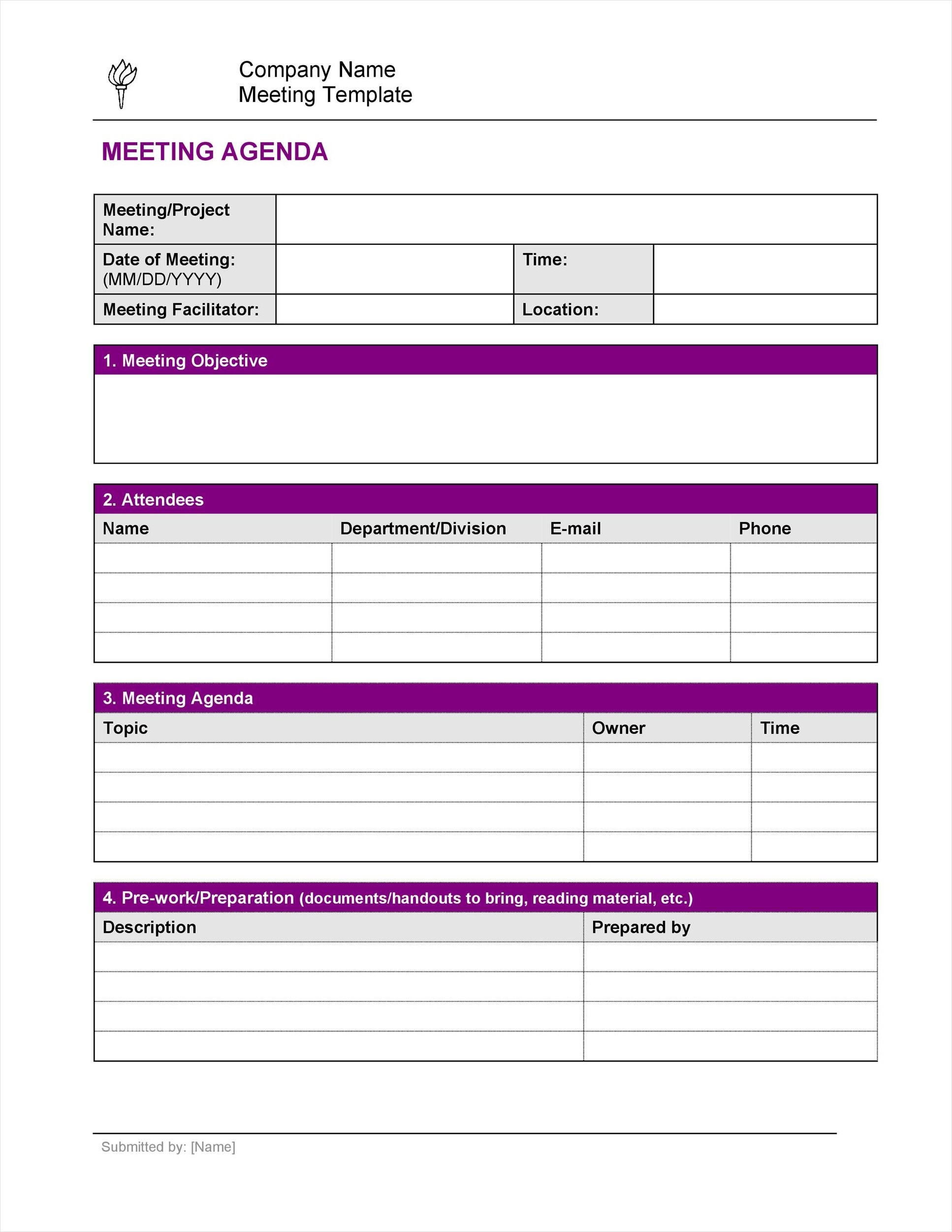An employee meeting agenda is a document that outlines the topics and activities to be discussed during a scheduled meeting with employees. It serves as a guide to ensure that the meeting stays on track and covers all necessary information. A well-structured agenda helps maximize productivity, improve communication, and foster engagement among team members.
Why is an Employee Meeting Agenda Important?
Having a well-prepared agenda for employee meetings is crucial for several reasons:
- Organization: An agenda keeps the meeting organized and ensures that all important points are addressed.
- Time Management: It helps in managing time effectively by allocating specific time slots for each agenda item.
- Productivity: An agenda keeps the meeting focused and prevents unnecessary discussions, leading to increased productivity.
- Engagement: A clear agenda allows employees to prepare and contribute to the meeting, fostering active participation and engagement.
- Accountability: An agenda sets clear expectations for attendees and holds them accountable for their roles and responsibilities during the meeting.
How to Create an Effective Employee Meeting Agenda
Creating an effective employee meeting agenda involves several key steps:
1. Identify the Meeting Purpose
Start by defining the purpose of the meeting. Determine what specific topics or issues need to be addressed and what outcomes you hope to achieve through the meeting. This will help you set a clear direction for the agenda.
2. Prioritize Agenda Items
List all the topics that need to be covered during the meeting and prioritize them based on importance and urgency. This will help you allocate time accordingly and ensure that the most critical issues are addressed first.
3. Set Realistic Timeframes
Assign timeframes for each agenda item to ensure that the meeting stays on track. Be realistic in estimating the time needed for discussions and allocate additional time for important topics that may require more in-depth conversations.
4. Provide Background Information
Include relevant background information or context for each agenda item. This will help employees prepare beforehand and have a better understanding of the topics to be discussed during the meeting.
5. Include Discussion Questions
For each agenda item, include discussion questions that prompt engagement and encourage employees to share their ideas and perspectives. This will help stimulate meaningful discussions and generate valuable insights.
6. Assign Roles and Responsibilities
If there are specific tasks or responsibilities associated with agenda items, assign them to individuals or teams. This ensures that everyone is clear on their roles and helps in holding participants accountable for their contributions.
7. Share the Agenda in Advance
Distribute the agenda to all meeting participants well in advance. This gives them sufficient time to review the topics, prepare their thoughts, and come to the meeting fully prepared. It also allows them to suggest any additional agenda items if needed.
8. Review and Revise
Before finalizing the agenda, review it to ensure that all important points are covered and that it aligns with the meeting’s purpose. Make revisions if necessary and seek feedback from key stakeholders to ensure that their concerns or suggestions are addressed.
Sample Employee Meeting Agenda
Below is an example of a sample employee meeting agenda:
1. Welcome and Introductions
- Introduce the purpose of the meeting
- Provide a brief overview of the agenda
- Allow participants to introduce themselves
2. Review of Previous Meeting Minutes
- Discuss any pending action items from the previous meeting
- Address any concerns or questions related to the previous meeting
3. Updates and Announcements
- Share important updates or news related to the organization
- Announce upcoming events or initiatives
4. Presentation: Project X Updates
- Provide an overview of the project’s progress
- Discuss any challenges or roadblocks
- Solicit input and suggestions from team members
5. Discussion: Team Building Activity
- Present a proposed team-building activity
- Discuss the benefits and objectives of the activity
- Seek feedback and suggestions from team members
6. Open Forum
- Allow participants to raise any questions or concerns
- Encourage open discussion and brainstorming
- Address any issues or provide clarifications
7. Next Steps and Action Items
- Summarize the key decisions and action items
- Assign responsibilities and deadlines for each action item
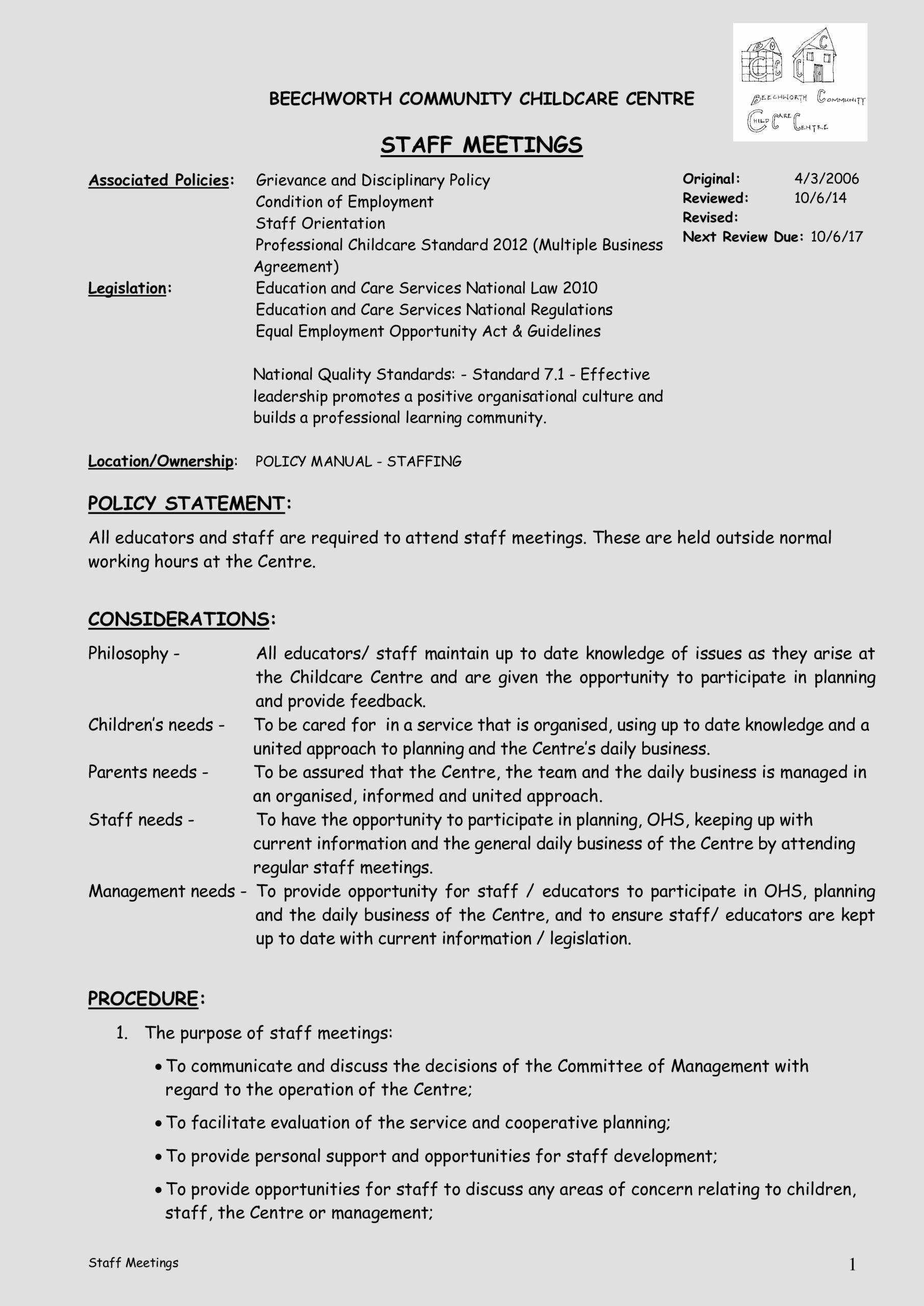
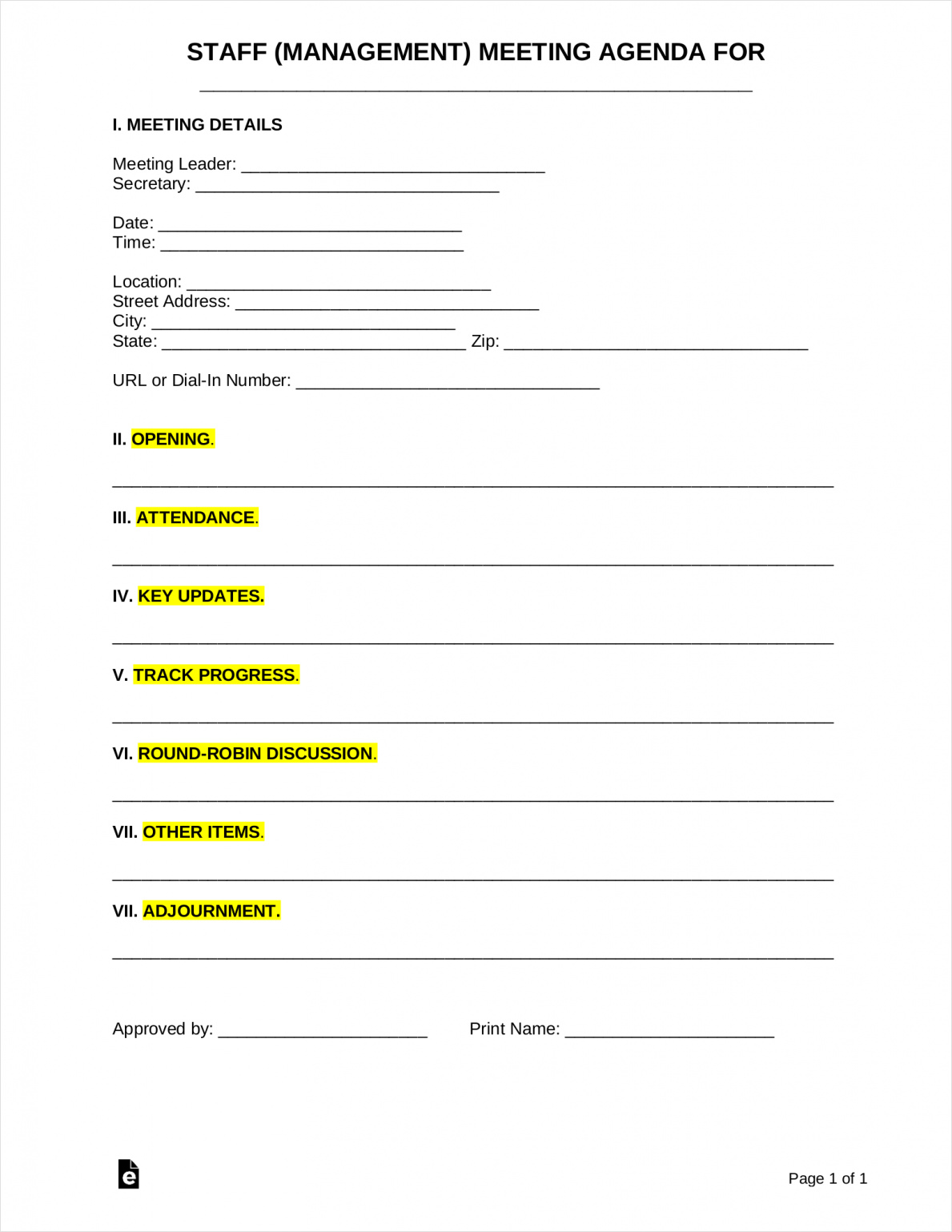
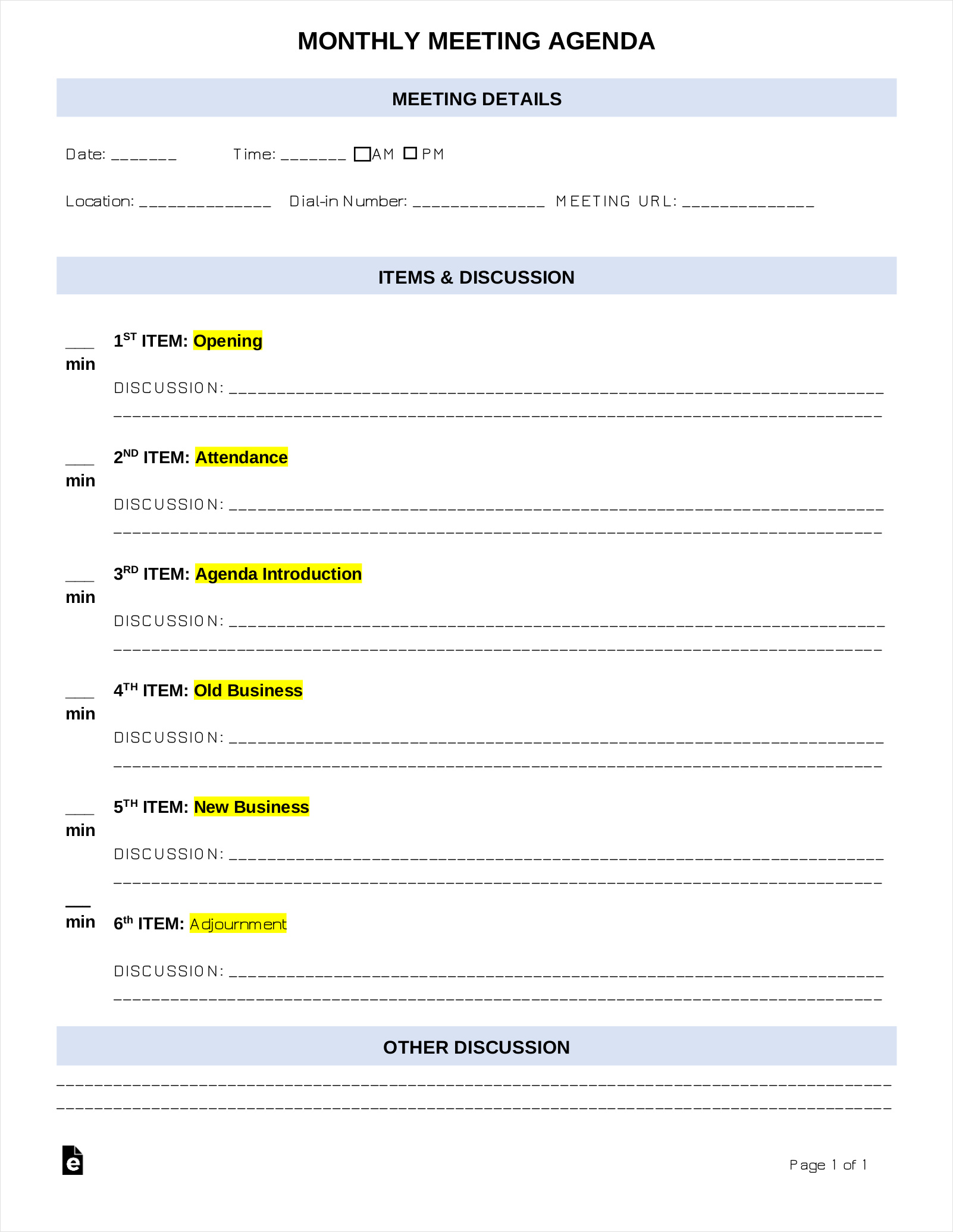
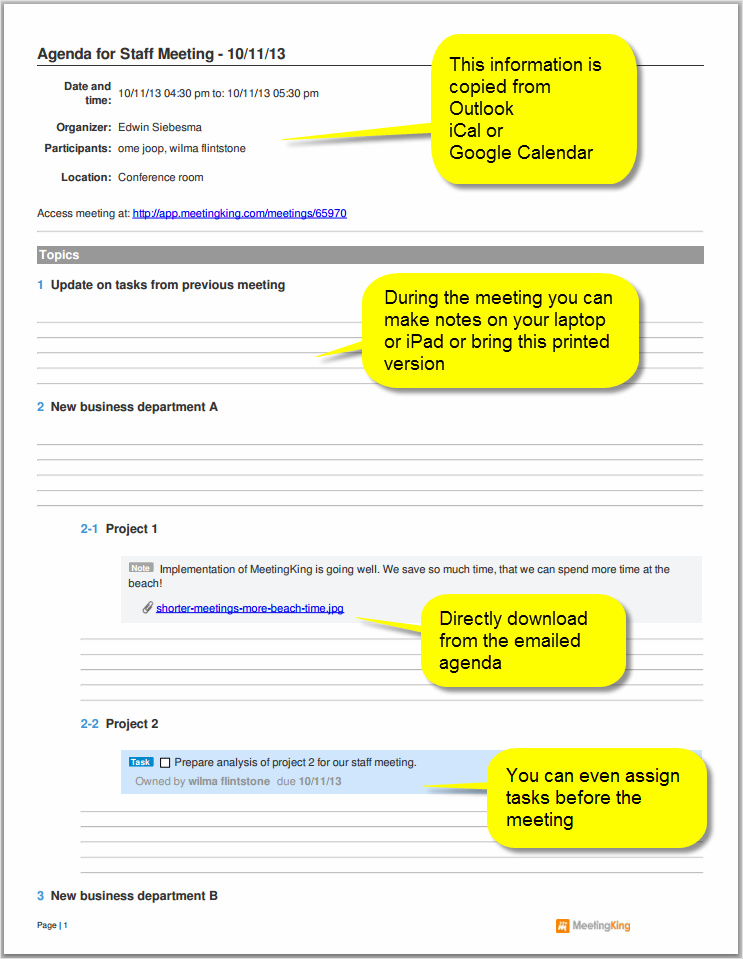
Conclusion
An employee meeting agenda is an essential tool for ensuring productive and efficient meetings. By following the steps outlined in this guide, you can create a well-structured agenda that keeps participants engaged, focused, and accountable. Remember to share the agenda in advance and encourage active participation to make the most out of your employee meetings.
Employee Meeting Agenda Template Excel – Download
